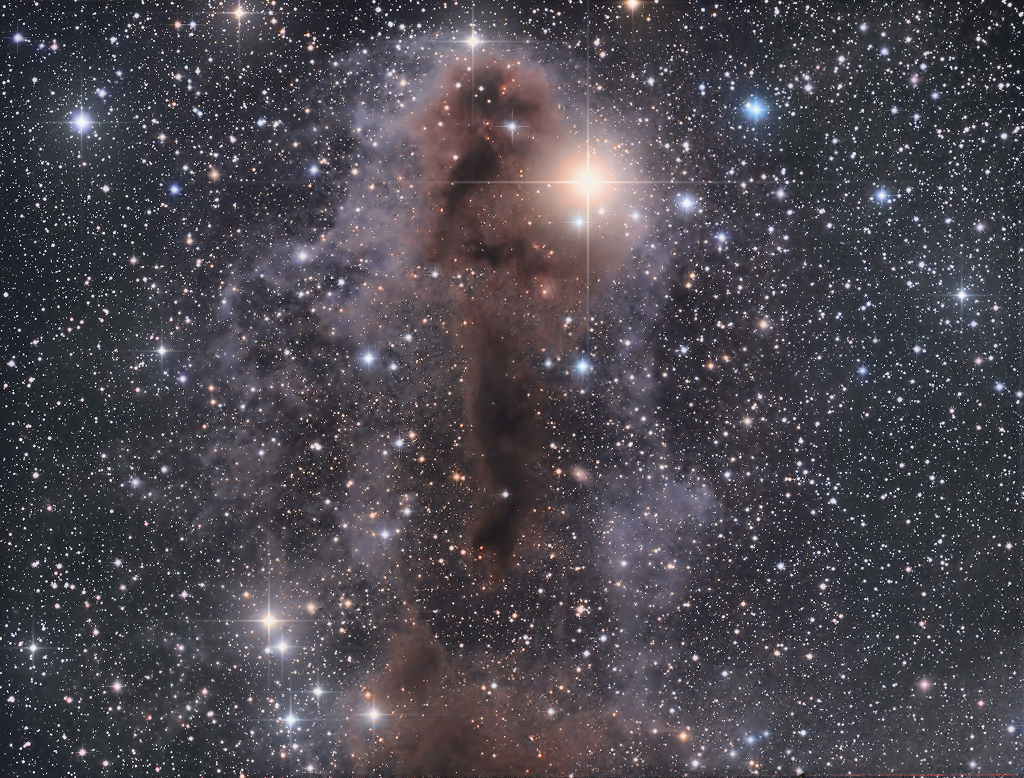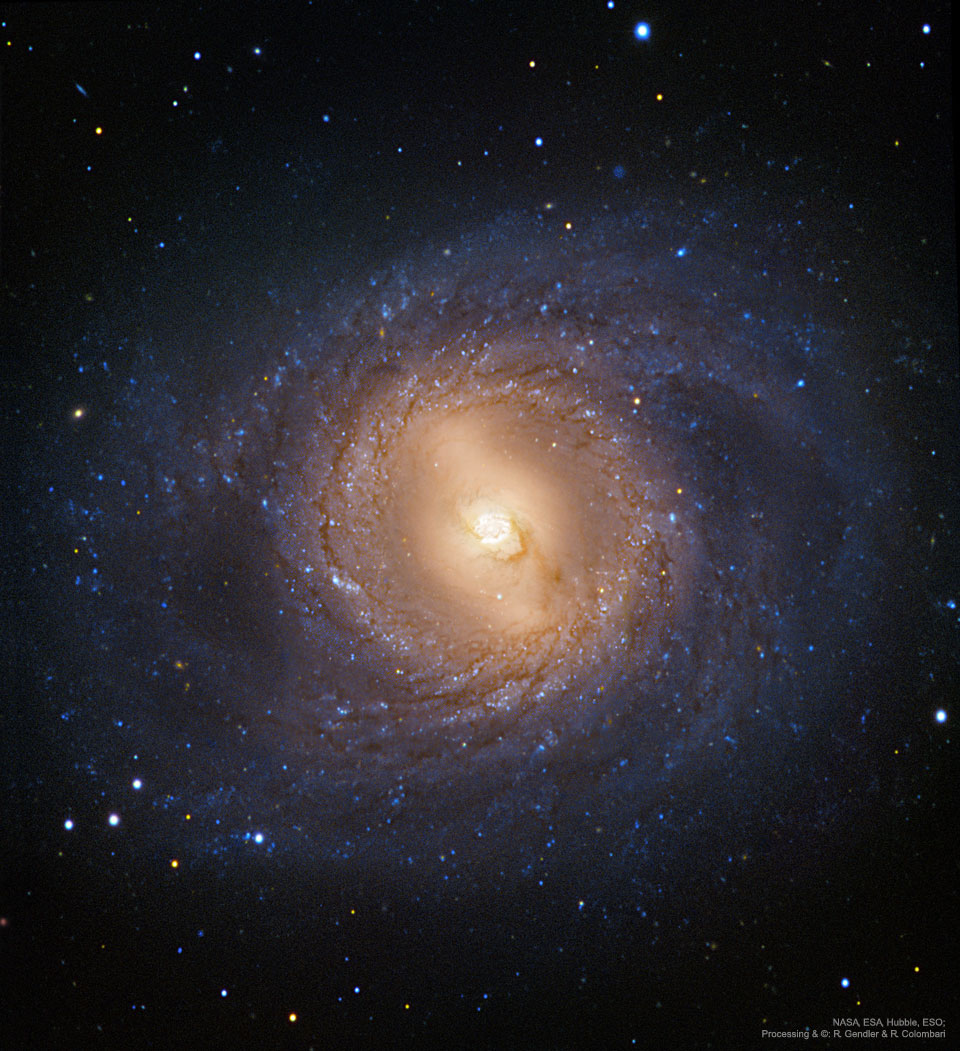| | | Police say another six people were injured and are being treated at hospitals. The suspect, a city employee, is also dead. |
| |
|
|
|
| You received this message because you're subscribed to our Breaking News Alerts emails.
| Unsubscribe | Privacy Policy |
NPR
1111 N. CAPITOL ST. NE
WASHINGTON DC 20002 |
| |
| | | |   |  |
| | | | | The judge granted the clinic's request for a temporary restraining order and set a hearing date in early June. |
| |
|
|
|
| You received this message because you're subscribed to our Breaking News Alerts emails.
| Unsubscribe | Privacy Policy |
NPR
1111 N. CAPITOL ST. NE
WASHINGTON DC 20002 |
| |
| | | |   |  |
Astronomy Picture of the Day Discover the cosmos! Each day a different image or photograph of our fascinating universe is featured, along with a brief explanation written by a professional astronomer. 2019 May 31
 Lynds Dark Nebula 1251
Image Credit & Copyright: Francesco Sferlazza, Franco Sgueglia, Astro Brallo Explanation: Stars are forming in Lynds Dark Nebula (LDN) 1251. About 1,000 light-years away and drifting above the plane of our Milky Way galaxy, the dusty molecular cloud is part of a complex of dark nebulae mapped toward the Cepheus flare region. Across the spectrum, astronomical explorations of the obscuring interstellar clouds reveal energetic shocks and outflows associated with newborn stars, including the telltale reddish glow from scattered Herbig-Haro objects seen in this sharp image. Distant background galaxies also lurk on the scene, visually buried behind the dusty expanse. The deep telescopic field of view imaged with broadband filters spans about two full moons on the sky, or 17 light-years at the estimated distance of LDN 1251. Tomorrow's picture: light-weekend
< | Archive | Submissions | Index | Search | Calendar | RSS | Education | About APOD | Discuss | >
Authors & editors: Robert Nemiroff (MTU) & Jerry Bonnell (UMCP)
NASA Official: Phillip Newman Specific rights apply.
NASA Web Privacy Policy and Important Notices
A service of: ASD at NASA / GSFC
& Michigan Tech. U.
This is an automated email. If you notice any problems, just send me a note at gtracy@gmail.com. You can add and remove email addresses to this distribution list here, https://apodemail.org.Unsubscribe
Astronomy Picture of the Day Discover the cosmos! Each day a different image or photograph of our fascinating universe is featured, along with a brief explanation written by a professional astronomer. 2019 May 30
 Sunrise at Copernicus Crater
Image Credit & Copyright: Sage Gray Explanation: A prominent impact site anchored in the lunar Oceanus Procellarum, Copernicus crater is at the center of this telescopic portrait in light and shadow. Caught in stacked and sharpened video frames recorded on April 14 at 3:30am UTC, the lunar terminator, or boundary between night and day, cuts across the middle of the 93 kilometer diameter crater. Sunlight is just beginning to strike its tall western walls but doesn't yet shine on lower terrain nearby, briefly extending the crater's outline into the lunar nightside. At that moment standing at Copernicus crater you could watch the sunrise, an event that happens at Copernicus every 29.5 days. Of course that corresponds to a lunar month or a lunation, the time between consecutive Full Moons, as seen from planet Earth. Tomorrow's picture: pixels in space
< | Archive | Submissions | Index | Search | Calendar | RSS | Education | About APOD | Discuss | >
Authors & editors: Robert Nemiroff (MTU) & Jerry Bonnell (UMCP)
NASA Official: Phillip Newman Specific rights apply.
NASA Web Privacy Policy and Important Notices
A service of: ASD at NASA / GSFC
& Michigan Tech. U.
This is an automated email. If you notice any problems, just send me a note at gtracy@gmail.com. You can add and remove email addresses to this distribution list here, https://apodemail.org.Unsubscribe
Your skin efficiently synthesizes vitamin D from sunlight. But too much sun comes with health risks. Here's how to safely get vitamin D from the sun.
| | | | Over the new few weeks, there will be capes and cartoons aplenty coming to a movie theater near you. Summer blockbuster season actually began weeks ago with the debut of one of the most successful movies in history. But there are smaller, quieter, weirder films on the horizon. For every gargantuan terror flick like Godzilla, there are smaller-bore scares like Midsommar. Marvel fans are here for the big-swing spectacle of Spider-Man’s study abroad jaunt, Far From Home. And critics are praising the night-in-the-life high school comedy Booksmart. |
Film Frame/Marvel Studios |
Back before Avengers: Endgame blew up the box office, the Pop Culture Happy Hour crew made their best guesses at which summer films would triumph or disintegrate, and named the movies they are most excited to see. |
- By Christopher Dean Hopkins |
|
| You received this message because you're subscribed to our Best of NPR emails.
| Unsubscribe | Privacy Policy |
NPR
1111 N. CAPITOL ST. NE
WASHINGTON DC 20002 |
| |
| | | |   |  |
Astronomy Picture of the Day Discover the cosmos! Each day a different image or photograph of our fascinating universe is featured, along with a brief explanation written by a professional astronomer. 2019 May 29
 M95: Spiral Galaxy with an Inner Ring
Image Credit: NASA, ESA, Hubble, ESO, Amateur Data; Processing & Copyright: Robert Gendler & Roberto Colombari Explanation: Why do some spiral galaxies have a ring around the center? First and foremost, M95 is one of the closer examples of a big and beautiful barred spiral galaxy. Visible in the featured combination of images from Hubble and several ground based telescopes are sprawling spiral arms delineated by open clusters of bright blue stars, lanes of dark dust, the diffuse glow of billions of faint stars, and a short bar across the galaxy center. What intrigues many astronomers, however, is the circumnuclear ring around the galaxy center visible just outside the central bar. Although the long term stability of this ring remains a topic of research, observations indicate its present brightness is at least enhanced by transient bursts of star formation. M95, also known as NGC 3351, spans about 50,000 light-years, lies about 30 million light years away, and can be seen with a small telescope toward the constellation of the Lion (Leo). Almost Hyperspace: Random APOD Generator
Tomorrow's picture: open space
< | Archive | Submissions | Index | Search | Calendar | RSS | Education | About APOD | Discuss | >
Authors & editors: Robert Nemiroff (MTU) & Jerry Bonnell (UMCP)
NASA Official: Phillip Newman Specific rights apply.
NASA Web Privacy Policy and Important Notices
A service of: ASD at NASA / GSFC
& Michigan Tech. U.
This is an automated email. If you notice any problems, just send me a note at gtracy@gmail.com. You can add and remove email addresses to this distribution list here, https://apodemail.org.Unsubscribe
| | | | | Mueller, a decorated veteran and long-serving prosecutor, will return to public life to lead the most watched — and yet lowest profile — Washington investigation in a generation. |
| |
|
|
|
| You received this message because you're subscribed to our Breaking News Alerts emails.
| Unsubscribe | Privacy Policy |
NPR
1111 N. CAPITOL ST. NE
WASHINGTON DC 20002 |
| |
| | | |   |  |
| | | | | Robert Mueller, who hasn't spoken publicly since the Russia investigation began, is scheduled to give remarks from the Justice Department. |
| |
|
|
|
| You received this message because you're subscribed to our Breaking News Alerts emails.
| Unsubscribe | Privacy Policy |
NPR
1111 N. CAPITOL ST. NE
WASHINGTON DC 20002 |
| |
| | | |   |  |
Astronomy Picture of the Day Discover the cosmos! Each day a different image or photograph of our fascinating universe is featured, along with a brief explanation written by a professional astronomer. 2019 May 28
 Stars, Dust, and Gas near NGC 3572
Image Credit & Copyright: Andrew Campbell Explanation: Star formation can be colorful. This chromatic cosmic portrait features glowing gas and dark dust near some recently formed stars of NGC 3572, a little-studied star cluster near the Carina Nebula. Stars from NGC 3572 are visible near the bottom of the image, while the expansive gas cloud above is likely what remains of their formation nebula. The image's striking hues were created by featuring specific colors emitted by hydrogen, oxygen, and sulfur, and blending them with images recorded through broadband filters in red, green, and blue. This nebula near NGC 3572 spans about 100 light years and lies about 9,000 light years away toward the southern constellation of the Ship's Keel (Carina). Within a few million years the pictured gas will likely disperse, while gravitational encounters will likely disperse the cluster stars over about a billion years. Astrophysicists: Browse 1,900+ codes in the Astrophysics Source Code Library
Tomorrow's picture: famous spiral
< | Archive | Submissions | Index | Search | Calendar | RSS | Education | About APOD | Discuss | >
Authors & editors: Robert Nemiroff (MTU) & Jerry Bonnell (UMCP)
NASA Official: Phillip Newman Specific rights apply.
NASA Web Privacy Policy and Important Notices
A service of: ASD at NASA / GSFC
& Michigan Tech. U.
This is an automated email. If you notice any problems, just send me a note at gtracy@gmail.com. You can add and remove email addresses to this distribution list here, https://apodemail.org.Unsubscribe
| | | | |